Call me literal-minded but I pay close attention to exhibition titles. They can elicit enlightenment or puzzlement. Anticipating Layered Abstraction, I experienced a bit of both. I knew the large body of abstract work by Margo Allman and Helen Mason, well-established artists who work in various media. But a quick look around the gallery, at the Delaware Art Museum, dispelled any mystery about “layered,” as I fathomed its multiple meanings in the 139 paintings, drawings, and sculptures on view. I saw many invitations to look (and sometimes walk) within and around these works of art.
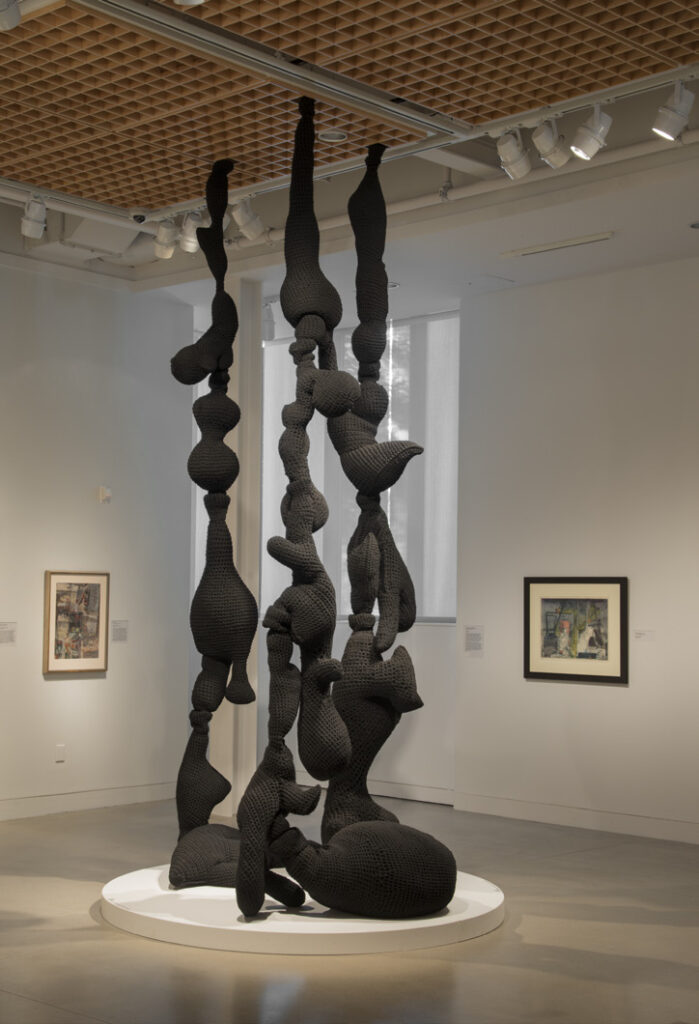
“Black Herculon Assemblages,” 1976. Fiber, variable dimensions.
Delaware Art Museum, Gift of the artist, 2015. ©Margo Allman
Margo Allman has said that awareness of forms, spaces, colors, and light—natural and man-made—galvanize her art. “Black Herculon Assemblages” sprang from such perceptions.
In 1976, she ordered 600 pounds of black Herculon yarn (a brand name for a strong, lightweight synthetic fiber). Working primarily on her porch, Allman designed and crocheted some of the yarn into 75 variously-shaped pouches into which she stuffed the rest of the unwieldy material. With hooks attached to the top and bottom of each piece, a grouping can be configured in different ways. The biomorphic shapes evoke undulating microscopic organisms suddenly grown ominously life-size. But I felt a playful quality, too, as I walked around and noticed how the voids created their own shapes. With difficulty, I resisted the temptation to touch this very tactile sculpture.
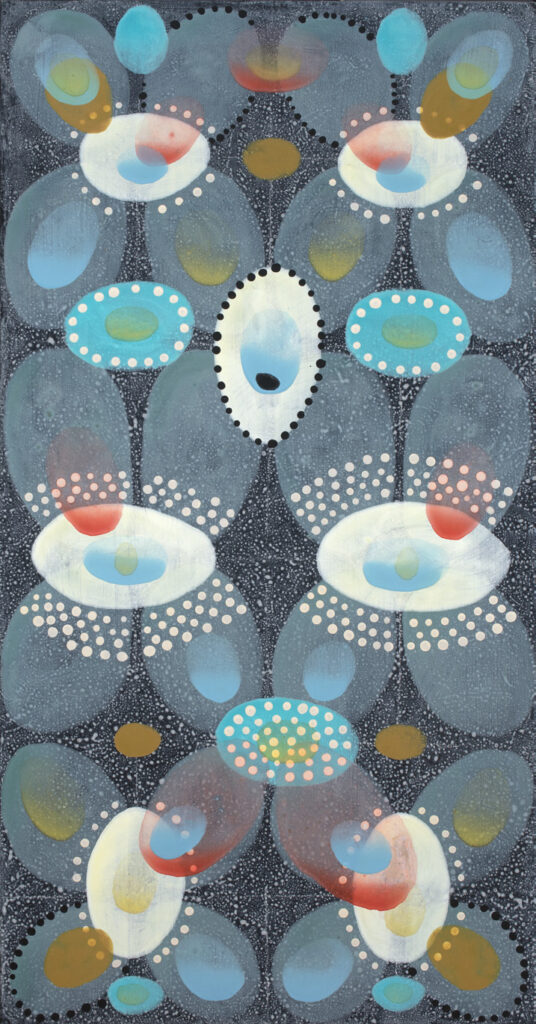
“Ovoidal Divisions,” 2018. Acrylic on panel, 38 7/8 × 20 1/8 inches. Margo Allman (b. 1933) Courtesy of the artist. ©Margo Allman
Allman’s “Ovoidal Divisions” bursts into color and motion, conjuring up at first glance nature’s predictable symmetries. But there are subtle variations in what appears to be an orderly grid of ovoid forms placed upright and sideways, and interspersed with opaque black and white dots and swaths of bright color. There are no duplicates here. Most ovoids are translucent, each one filtering light differently. All float against a darker background scattered with luminous white dots. Are these egg-shaped structures falling through or emerging from an enigmatic dark firmament? It’s as if astronomy and biology joined forces to produce this magical scene.
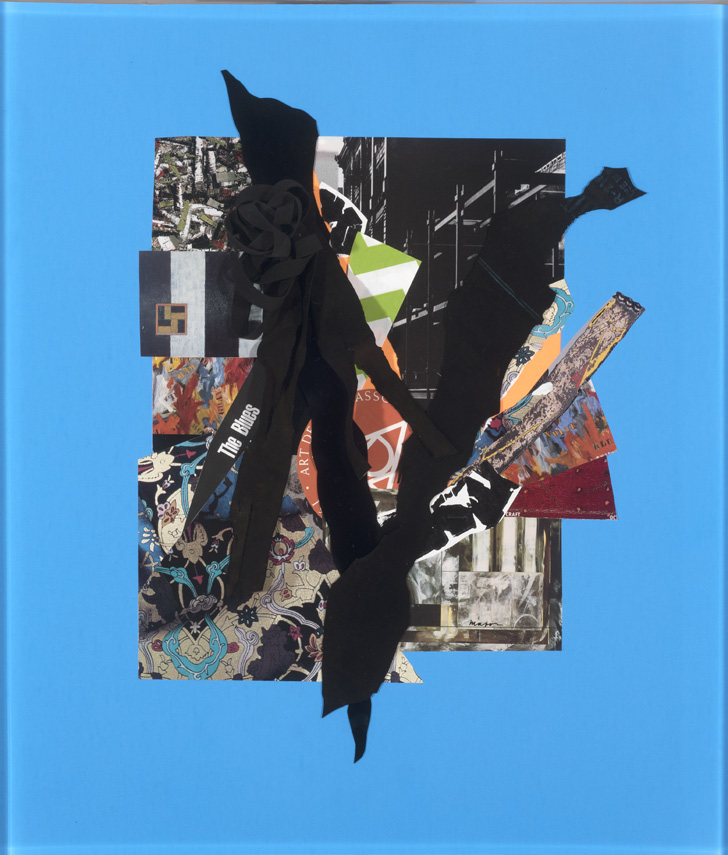
“Calligraphic Collaboration (blue, collage II),” 2015. Paper, rubber, and Plexiglas, 24 x 22 x 4 inches. Courtesy of the artist. ©Helen Mason
Helen Mason notes that she looks for new ways to use unconventional materials. For her collage, “Calligraphic Collaboration,” she transformed discarded pieces of industrial black rubber into graceful knotted curves and angled edges suggestive of a secret alphabet.
On one glossy rubber strip, the words “The Blues” set a mood of exuberance and grief, melody, dissonance and transitions between major and minor keys. The musical allusion resonates with colliding fragments of urban architecture, a logo, floral designs, hard-edge and painterly geometric constructions, slashes of color, and muted tones. The collage breaks free of any confines into the brilliant blue background. During Mason’s four months in Japan, she focused on Japanese designs for wrapping, tying, and bundling, a craft originally devised for transporting goods and for gift-giving. In “Diagonal Bundle,” she reinterprets these ancient techniques in contemporary materials, combined with the Japanese reverence for the color black.
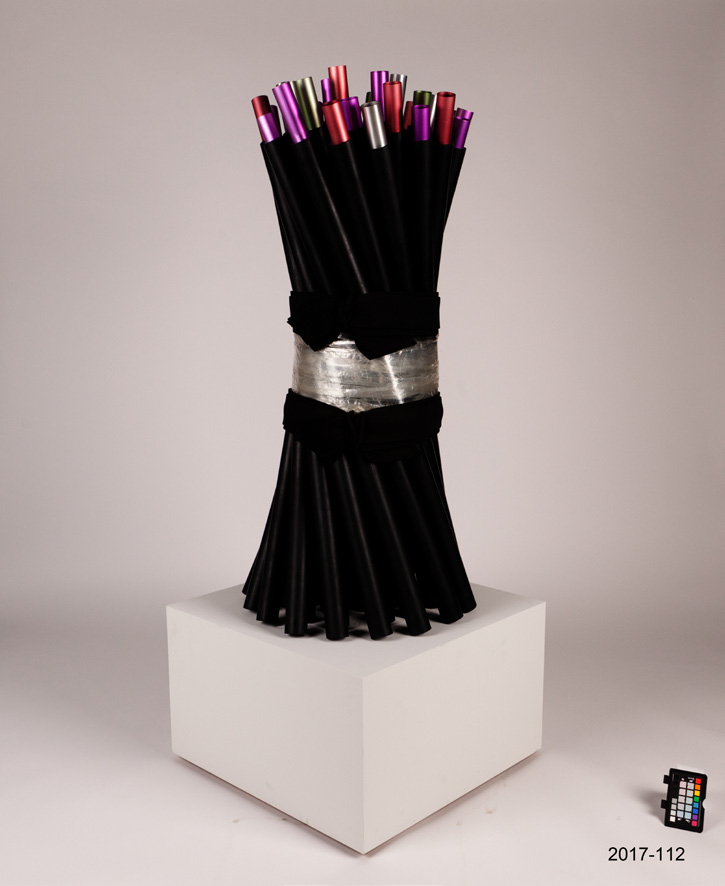
“Diagonal Bundle,” c. 1988. Anodized aluminum and rubber, 48 x 22 x 22 inches. Delaware Art Museum, Gift of the artist, 2017. ©Helen Mason
Mason inserted iridescent anodized aluminum tubes (representing scrolls) into rubber hoses. Polyurethane tape (referring to the belt worn with traditional Japanese clothing) holds the bundle together and causes the tubes to rotate outward, as if energized from within. Ties above and below the tape recall gift-giving customs and convey the presence of the artist’s hand. The inserts changed color as I moved around, their metallic sheen reminiscent of natural elements such as minerals and seashells. The whole effect is both serene and lively.
The juxtaposition of Mason’s Garden and Allman’s Wall installation crystalizes a conversation between the artists. Mason’s lustrous black sculpture is a garden abstracted from nature. Its spiky leaves, swaying reeds, and glistening ponds are quintessentially terrestrial. Surrounding the garden, Allman’s drawings—enlarged from small, etching-like ones—suggest spider webs and planets swirling above through endless space.
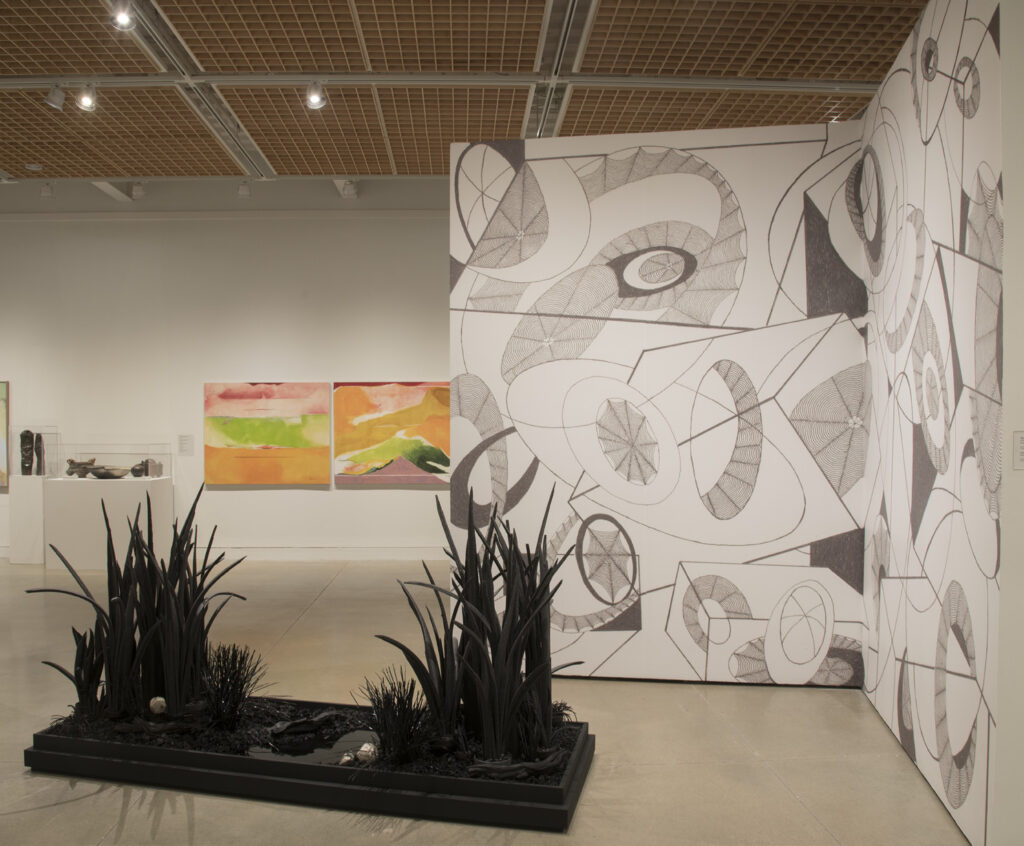
Margo Allman and Helen Mason share an adventurous spirit. They delight in experimenting with unusual materials at the intersection of art, craft, and nature. And then they envision what’s possible, get to work, and create unique works of art. In the spirit of Michelangelo: “I saw the angel in the marble and carved until I set him free.”
Layered Abstraction through January 17, 2021 – Delaware Art Museum, Toll free: 866-232-3714 www.delart.org

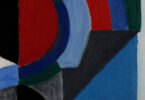
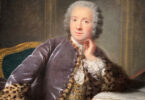
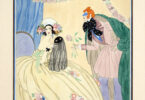
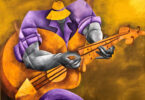
Leave a Comment